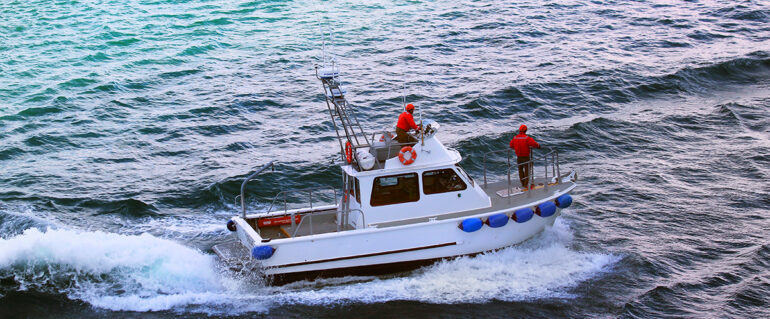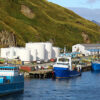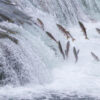Get to Know the Gulf of Alaska
Located in the northern part of the Pacific Ocean, the Gulf of Alaska is a marine area that makes up the state's southern coastline. This region is broad, stretching from the Alaska Peninsula in the west to Kodiak Island in the east. What makes this place unique? Almost everything. Let's learn more about some of the defining features of this gulf.
Coastline
The Gulf of Alaska's coastline includes various environments, from a sound to inlets and bays. You'll find tide pools, forests, mountains, and even glaciers. In fact, this area is home to two of the most massive glaciers in Alaska, the Bering Glacier, and the Malaspina Glacier. Both travel to the gulf and contribute runoff and sediment. When chunks of the glaciers break off at the coast, they become icebergs and are carried out to the Pacific Ocean by the strong currents.
Water
There is a common misconception associated with the waters that are in the Gulf of Alaska. The salty water from the Pacific Ocean flows with freshwater glacial runoff (with sediment) to create what some people conclude is a place where the oceans don't mix. The two types of water have different colorations and clarity, which makes an observable line. This area is where the waters begin to combine. More is happening at depths greater than on the surface. The waters do eventually combine in the current. Another aspect of this is that there isn't a specific location for the observable line; it varies based on glacial melt and current.
Depth
The Gulf of Alaska's depth varies depending on where you are in the region due to continental shelf and trenches. Most depths max out at around 9900 feet (3,000 meters), which is approximately 1.86 miles. However, the Aleutian trench, located between the Komandor Islands and the Gulf of Alaska, has a maximum depth of almost 27,000 feet (8100 m), which is just over 5 miles deep. That is 1,650 Honda Accord cars lined up bumper to bumper.
Current
The Alaska Current is unique in that it has a gyre that flows counter-clockwise. A gyre is the circulation of ocean currents. The Pacific Ocean, on the other hand, has a clockwise gyre.
Ecosystem
With a saltwater and freshwater composition, the Gulf of Alaska has a highly active ecosystem. Experts have noted a recent decline in the overall marine system, which can be cyclical. However, there is still some concern that a changing climate would have impacts the region and its productivity, including its deepwater corals. Alaska's commercial fishing industry is heavily reliant on the strength of the marine ecosystem here.
Weather
Ever wonder why is it so rainy in the Pacific Northwest? There is a semi-permanent low-pressure system called the Aleutian Low (near the Aleutian Islands), which influences the Gulf of Alaska's circulation pattern. The Aleutian Low is most active in the winter months and, when paired with the Alaskan Current (warm water), is known to churn up storms that produce heavy snowfall and ice in Southern Alaska. The storm then rides the gulf stream out of Alaska and south, creating seasonal rain and snow in British Columbia, Canada, Washington, and Oregon. Major storms are common, and the Gulf of Alaska has even experienced hurricanes and typhoons over the years.
We Are Here
Alaska Air Forwarding is a unique shipping company with the expertise, knowledge, and experience to quickly and efficiently get your equipment and goods to Alaska. We ship freight door to door like no other shipping company because of our access to Alaska's most remote areas. We have offices in Anchorage and Dutch Harbor. For help with your shipping needs, contact us, or submit a quote request to learn more.






